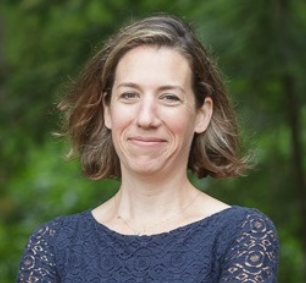The carbon credit marketplace, which many consider indispensable to improving the level of CO2 in the environment, needs to establish trust in order to thrive
The voluntary carbon credit marketplace has not been without controversy, even being compared to the Wild West. For example, recent controversy about the world’s largest carbon credit provider — which reportedly sold millions of dollars in questionable carbon credits based on a forest project in Zimbabwe without verifiable and reliable accounting of how the money was spent which resulted in phantom carbon credit sales to major multinational companies — has damaged the very idea of carbon credit.
Many carbon market observers have called for government regulation as a solution to engender the trust necessary to attract reputable participants in the marketplace. Two key players central to improving trust in the carbon market are the Voluntary Carbon Markets Integrity Initiative, an international non-profit organization with a mission to enable high-integrity voluntary carbon markets, and the Integrity Council for the Voluntary Carbon Markets, an independent governance body for the voluntary carbon market that sets standards and rules for better oversight.
Others see an urgent need for improved frameworks, oversight, and governance in the carbon market. One of them is Alicia Robbins, vice president of portfolio analytics and business development at Weyerhaeuser, a 123-year-old sustainable forestry and wood products company and the largest private owner of timberlands in the United States. Robbins also holds a PhD in forest economics.
Forests serve as a source of carbon removal
Timberlands provide one of the best natural ways of removing carbon from the atmosphere and can play an important role in mitigating climate change, Robbins explains. “Forests have been around for almost as long as the planet,” she says. “They are a proven method of sequestering carbon, and there is no expensive, complicated, or undeveloped technology required to reduce carbon emissions through forests.”

Forests reduce carbon emissions by absorbing carbon dioxide (CO2), the most prevalent greenhouse gas. Using the energy of the sun and through the process of photosynthesis, trees take water and CO2 and convert them into the energy that enables them to grow. As they grow, trees become carbon vaults and release oxygen in the process.
Recently, Weyerhaeuser began offering verified carbon credits through its first forest carbon project in Maine, which spans approximately 50,000 acres of forest land. To secure approval for the project, Weyerhaeuser had to demonstrate to third-party auditors that its forest management plan would result in more carbon being stored within the project’s boundaries than under business-as-usual operations. This concept of additionality is an important indicator of quality and an essential component to any forest carbon project.
A carbon credit contract, which usually lasts 40 years, requires the company to hold the timberland for that period of time, with the credit issuance allowed during the first 20 years of that period. Over the course of the Maine project’s lifetime, Weyerhaeuser expects to issue 475,000 credits, with one credit equaling one metric ton of carbon removal.
Active forest management and third-party verification are critical
Carbon credits are used to help companies reduce their carbon footprints. As such, trust is an essential element for the growth and use of carbon markets. It is established, in part, through third-party verification, and in the case of Weyerhaeuser, active management of projects by forestry companies.
For example, Weyerhaeuser’s project in Maine is on land the company already owned and managed, and the company took a conservative approach in the development of its project to ensure a trusted baseline that ensures additionality, and in dealing with issues like leakage and permanence. Indeed, Weyerhaeuser’s 100-plus years of experience sustainably managing forests includes strong inventory, planning, and governance systems, which enable the company to provide conservative, trustworthy estimates of well-managed projects that provide real carbon emission removals and reductions over time, according to Robbins.
Further, Weyerhaeuser actively manages the impacts of balancing the commercial supply and demand of timber to minimize leakage and the long-term ability of a carbon sequestration project to maintain its carbon storage benefits over the term of the contract — a practice known as permanence, she adds.
Weyerhaeuser developed its project in Maine using a science-based approved methodology of the American Carbon Registry, which is one of four major carbon credit registries in the world. The project is audited by an approved third party, which reviews Weyerhaeuser’s practices, modeling, and inventory specifications against the methodology and registry requirements. If validated by the auditor and approved by the registry, carbon credits are then made available and can be sold through a carbon credit market. In addition, the third-party auditor is required to revisit the forest every five years to verify that the number of credits issued matches the actual timber inventory on the ground.
To demonstrate its commitment to scaling a high-integrity market, Robbins says Weyerhaeuser is focused on selling to organizations with strong commitments to making a climate impact. “We want to do business with customers who value the role of high-quality, high-integrity credits,” she says, adding that the company “already have strong net-zero targets with a plan to first reduce their emissions, and then second, mitigate their remaining emissions through the use of carbon credits.”
Robbins notes that because of the scrutiny in the voluntary carbon market, buyers increasingly are focused on differentiating credits and understanding what goes into them. “We are most interested in these types of buyers because we think we have a different type of carbon credit to offer,” she explains.
Active operators of timberland with a strong history of management and governance are important to the supply of high-quality credits, especially in the US where there is no centralized voluntary carbon market regulator in place.







